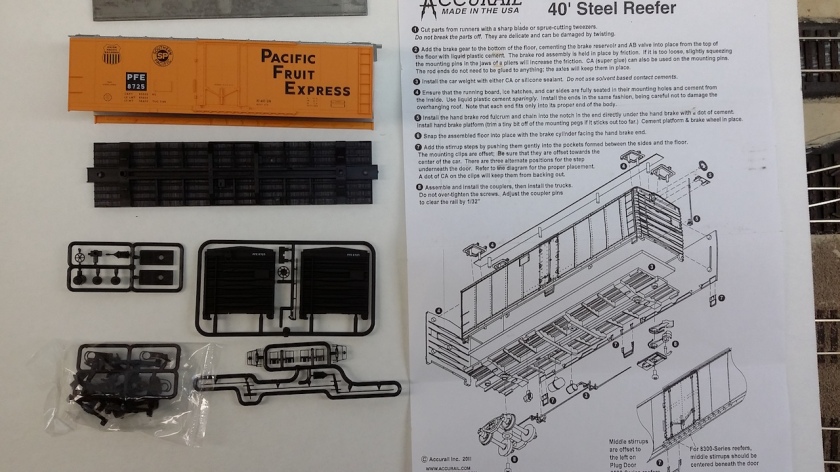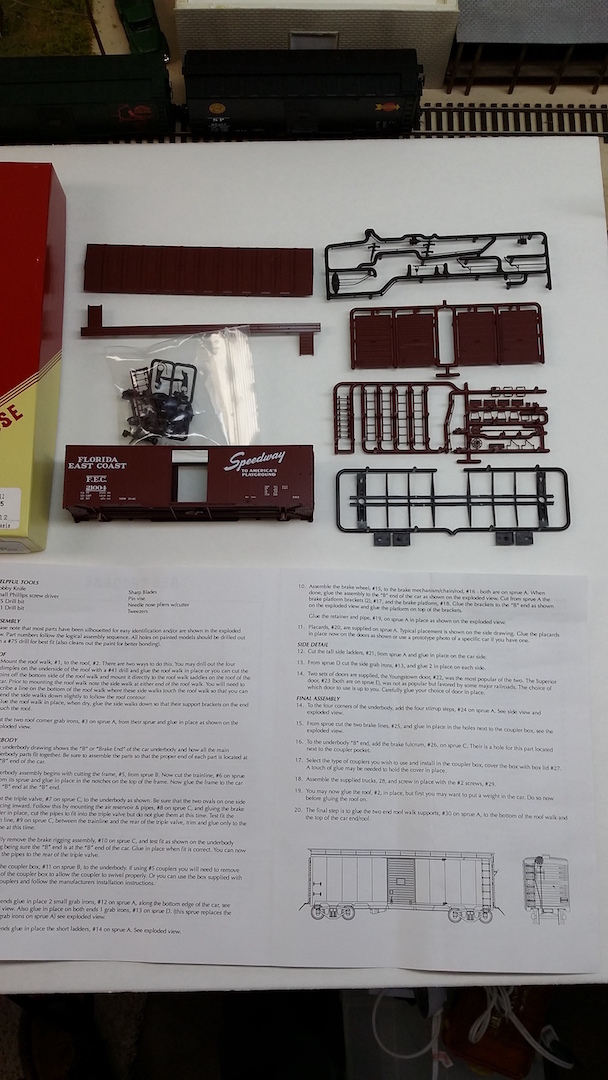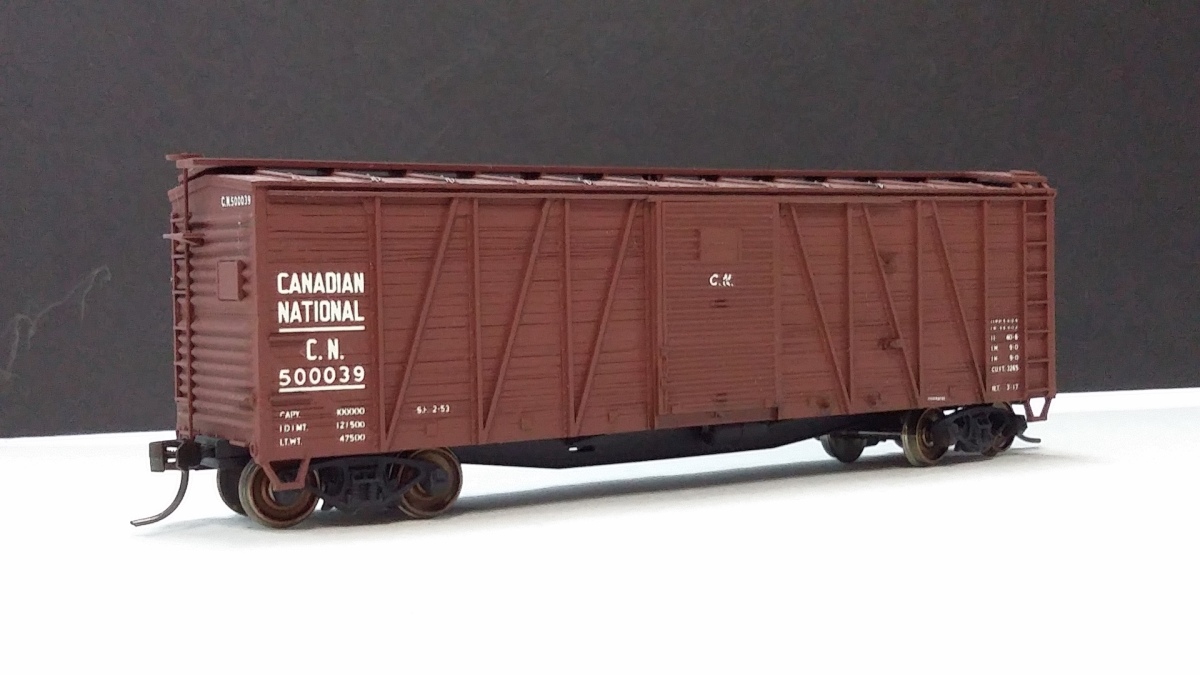Photo – Accurail kit assembled and upgraded with Kadee couplers and metal wheels.
There seems to be a fear of kits today among model railroaders. With fast food, streaming video and music, and next day shipping from anywhere within 4,000 miles it seems that the days of assembling models from kits are slipping away. Either people want things “now”, or they are hesitant to open a box and assemble their own model from parts. I can’t help you with the “now” factor, but I can help nudge you toward a very enjoyable part of the hobby, building your own rolling stock.
Why take the time to build your own? Limited selection of ready to run (RTR) rolling stock is one reason. Yes, there is a lot of rolling stock out there in plastic blister packs, but are they really the ones you want? I admit that I do buy good quality RTR cars when a highly desirable model comes out. But then look at the prices! These days $35 is a good deal for a well detailed RTR model. Enjoyment of the building process is the third reason. Putting together a fine model is an excellent way to spend an evening or several evenings.
I will not delve into the history of kits here but the old Ambroid kits with wooden parts were replaced by the Athearn “Blue Box” kits in the 70s and 80s and those have now been replaced by the more detailed kits by Accurail and Bowser which sell for under $20. A good entry point for someone starting in kits would be an Accurail box car. There are usually less than 20 parts and the model can be finished in a couple of hours of relaxed work. Here is a picture of an Accurail 8500 series refrigerated car. This car has separate ends due to the color differences, but most Accurail kits have the ends molded on, even easier. Instructions are clearly worded and logical. These kits are made in Illinois, not over-seas. The brake gear has a good level of detail, including rods and levers, but is not overly complicated to install. Ladders and grab irons are molded to the car but are a slim profile casting and look good on the layout. Lightly weathered these make great looking cars. The company also has many of the cars available unpainted if you would like to do some customizing of paint and decals.

Figure 1. Accurail kit with instructions.
After building a train of Accurail cars you may be wanting something a bit more challenging and detailed. You can step up to a Red Caboose kit. Here the ladders and grab irons and stirrups are separate molded parts which are glued onto the model body. The part count goes up and the parts get smaller and more delicate. You can see the upper right sprue set in Figure 2 has brake levers and rods – these get glued to the bottom of the car after the frame – the lower right sprue set – gets glued on. Notice also that there are two pairs of doors on the second sprue set from top right so that you can select the one which best models your era. These make great looking models, but not something for the kids to handle. Once you are accustomed to the Accurail kits, two evenings should have one of these fine kits on your layout.

Figure 2. Red Caboose kit and instructions. More detailed parts and more of them. A two evening project.
Now that you have added a few Red Caboose cars to your fleet, perhaps you are looking for a unique prototype from the 30s, 40s, or 50s and are willing to put some work into it, including painting and decaling. A Tichy kit may be just the thing. Made in North Carolina by the same company that makes a large line of window and door castings, these cars require drilling for grab irons and careful assembly but make wonderful models. They make several box car models, a tank car, coal hopper, and flat cars. Notice the sprue to the upper left of the box car body has two sets of end panels so that you can better match your prototype. The large steel nuts in the top center? Car weights. There are hexagonal moldings on the inside of the car floor to accept these and a dab of silicone or canopy glue holds them in place.

Figure 3. A Tichy kit, nicely detailed and a waiting challenge. There is a second side to the instructions.
If you want to get your feet wet in kit building I would suggest an Accurail box car, or a Bowser hopper. I have no interest of connection in any of these companies – I just have a cabinet full of kits. Use liquid solvent cement for styrene, not the “model airplane glue” in a tube. Apply with a very small paint brush or with a micro-brush, the ones that look like a little fluff ball on a stick hobby shops and craft stores sell them. Take care not to let cement get between your fingers and the parts you are holding – you will leave a “personal touch” on your model that will not be prototypical. Use a sharp Exacto #11 blade or sprue nippers to remove parts from the sprues. Work on a light background with good light, good ventilation, relax and take your time.
Be proud of your work. It’s called “modeling” after all.

Are there kits for kids so they can get started at a younger age?
LikeLike
Due to the small parts and solvent glues kits are not suitable for children under the teenage years. There used to be a line of kits that could be assembled with just a screwdriver and a dab of white glue but those are gone. An enterprising grandfather could come up with some un-painted, partially assembled wooden train cars that a child and parent could paint and put together with two small screws… I may see a blog post here.
LikeLike
Very informative. I really enjoyed reading this and looking forward to more. Thanks
LikeLike
This Accurail kit is a good place to start with kit building. While the detail is not what you would expect on a current “ready to run” like Kadee, or some of the more complex kits, it is superior to the Athearn “blue box” kits. They are also easily weathered with powders.
LikeLike